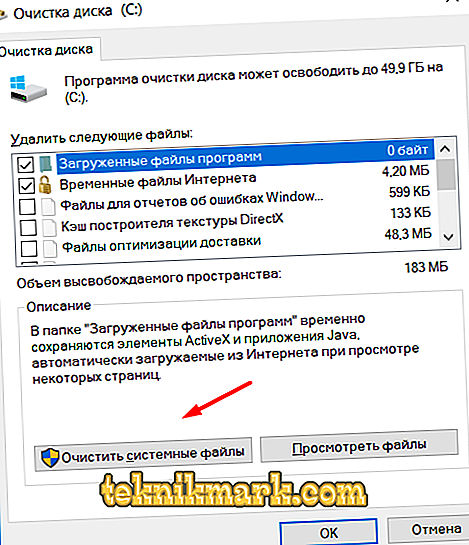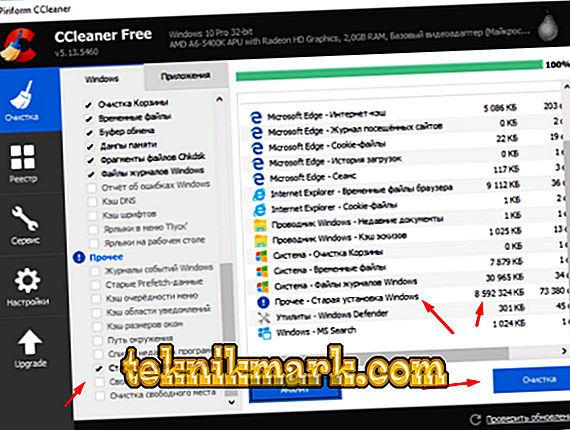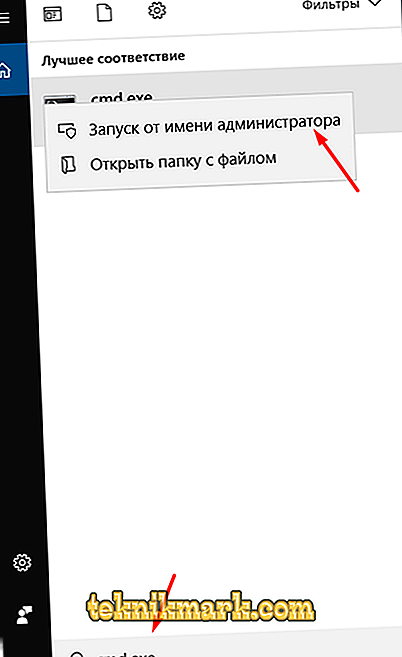The aggressive advertising company Microsoft, associated with updating the old versions of the operating system to the version with the number "10", has long been over, but its consequences have both affected users in the past and continue to affect to this day. Virtually every major update of Windows 10 introduces new directories into the system that “eat up” the free space of a hard disk with the same stable appetite, which Google Chrome also demonstrates in relation to RAM. This article focuses on the $ WINDOWS. ~ BT folder, which was also found in earlier versions of Windows, but it is in the Top Ten that it manifests and continues to show itself from the worst side. And about what its purpose is, whether it is possible to remove it, and most importantly, whether its removal of the operating system will not harm it, and the discussion will follow.

Delete the $ WINDOWS. ~ BT folder.
Purpose
The essence of this directory is in the hidden storage of the installation files of the operating system, which were downloaded in the background without notifying users about it. The weight / volume of the folder is quite impressive, on average, more than 6 GB, which contributes to the appearance of certain questions about the benefits of its being on the hard disk. It is worth noting that despite the fact that the peak of its distribution fell precisely on the promotional update of the operating system to “Tens”, it is found on computers and now, still taking away the nuggets of the hard disk or solid-state drive.
Deletion
Taking into account that assigning a folder to forcing users to upgrade to a new version of the operating system, as well as its secrecy, you cannot delete this directory in the usual way, no matter how hard you try. There are many different options for deleting “unrecoverable” files and folders, which also apply to the subject under consideration, but among them there are only a few methods that have been tested by many years of practical use, namely:
- "Using Third-Party Software." Everyone who faced the above mentioned problem, anyway, but heard about a small utility called “Unlocker”, which has saved many users more than once.
The utility is available for free download on the official website of developers //www.emptyloop.com/unlocker/. Download the executable file and install the “Unlocker” program, after which the utility tools will appear in the “Explorer”.

It remains only to click on the directory in question with the right mouse button (it is located in the section where the OS is installed), select "Unlocker" and in the opened window click on the "Delete" button. The folder "$. ~ BT" will be deleted without any problems, which will confirm the message of the program about the successful implementation of the uninstall.

- "The use of regular means." There is one fairly “harmless” trick to fool Windows.
It consists of one simple step - renaming the problem directory, giving it the name "Windows.old", which, in fact, turns it into a folder with files of the previous OS version. It remains to do the following:
- Click the right mouse button on the system partition and open its properties.
- On the "General" tab, locate the "Disk Cleanup" button and click on it.

- In the window that opens, click on "Clear system files."

- The utility will start scanning all files, the deletion of which can free up disk space. Among all the options, find the line "Previous installation of Windows" and check it box.
- Mark the rest as desired and click “OK”.
As an alternative to the built-in disk cleaning tools, you can use the “CCleaner” program, which can perform a similar sequence of actions:
- Launch the “CCleaner” program and open the “Cleaning” section.
- Scroll through the list of components to be checked to the "Other" block.
- Check the box "Old installation of Windows."

- Click on the "Analysis" button and after finding the data files, click on the "Cleaning" button.
The remaining options are also marked by the personal desire of each user.
- "Reassignment of rights of use and owner". The meaning is as simple as possible - it is to make the active account the full owner of the $ WINDOWS. ~ BT folder with all the privileges arising from this.
For implementation, you can use the command line functionality, namely:
- Press the key combination "WIN + S" and enter in the search bar "cmd.exe".
- Right-click on the search results and select "Run as administrator".

- Enter a sequence of three commands into the opened command line console:
- “Takeown /FC:\$Windows.~BT\* / R / A” - changes the owner;
- "Icacls C: \ $ Windows. ~ BT \ *. * / T / grant administrators: F" - granting rights to the new owner;
- "Rmdir / S / QC: \ $ Windows. ~ BT \ - deletes the directory and all contents with the confirmation request disabled."
- You just have to close the command line console.
It will also be good to restart the computer and check the availability, and in this case the absence, of the problem directory.
Conclusion
As already mentioned at the beginning of this article, the problem in question is fixed only on computers participating in the campaign for a free transition to the new version of the operating system, which is more than 100, 000, 000 devices (according to unofficial information). The only way to protect your computer, if it is included in the above numbers, from the re-emergence of the directory with the installation files is to switch to a full FPP license or a clean installation of the operating system.




